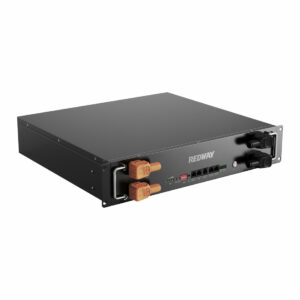Is UPS better than surge protector?
UPS (Uninterruptible Power Supply) and surge protectors serve distinct purposes in power management. A UPS provides uninterrupted power backup and voltage regulation during outages, while surge protectors focus solely on blocking voltage spikes. For critical systems requiring continuous uptime, UPS systems are superior due to their battery-backed power and multi-layered protection.
What’s the primary function of a UPS?
A UPS maintains uninterrupted power during outages through instant battery switching, typically within 2-8 milliseconds. It also filters line noise and stabilizes voltage fluctuations between 90V-140V (for 120V systems).

Unlike basic surge protectors, UPS systems combine three protective layers: voltage regulation, spike suppression, and backup power. For example, a 1500VA UPS can power a desktop computer for 15-30 minutes during outages—enough time for safe shutdown. Pro Tip: Always size UPS capacity 20% above your equipment’s wattage to prevent overload during power transitions.
How do surge protectors differ in protection scope?
Surge protectors use metal oxide varistors (MOVs) to clamp voltage spikes above 330V, sacrificing themselves to protect downstream devices. They lack backup power but excel at handling brief surges from lightning or grid fluctuations.
A quality surge protector absorbs up to 3000 joules of energy, with response times under 1 nanosecond. However, MOVs degrade with each surge—a unit hit by a 2000V spike might only withstand 5-7 more events. For critical data centers, this reactive approach isn’t sufficient. Why risk equipment when UPS systems offer proactive voltage control?
| Feature | UPS | Surge Protector |
|---|---|---|
| Backup Time | Minutes to Hours | None |
| Voltage Regulation | ±3% accuracy | No regulation |
| Surge Capacity | 5000+ joules | 1000-4000 joules |
When should you choose a UPS over surge protection?
Opt for UPS systems when protecting active equipment requiring continuous operation—servers, medical devices, or security systems. Surge protectors suffice for passive devices like lamps or chargers where brief outages are acceptable.
Consider a hybrid approach: Connect UPS units to mission-critical devices and use surge protectors for peripheral equipment. For instance, a network rack might have a 2200VA UPS powering switches and servers, while surge strips protect monitors and phones. But remember—does your insurance policy require UL 1449-certified protection for sensitive electronics?
What are the cost differences between solutions?
Entry-level surge protectors cost $10-$50, while basic UPS units start at $100 for 450VA models. High-end UPS systems with pure sine wave output and 3000VA capacity exceed $1000, offering runtime exceeding 1 hour at half-load.
| Solution | Initial Cost | Lifespan |
|---|---|---|
| Surge Protector | $15-$200 | 3-5 years |
| Line-Interactive UPS | $100-$800 | 5-7 years |
| Online Double-Conversion UPS | $500-$5000+ | 7-10 years |
RackBattery Expert Insight
FAQs
Can a UPS replace a surge protector?
Yes—quality UPS units include surge protection rated ≥3000 joules. However, use dedicated surge protectors for non-critical devices to preserve UPS battery life.
How often should UPS batteries be replaced?
Lead-acid UPS batteries typically last 3-5 years. Lithium-ion models in RackBattery systems maintain 80% capacity for 7+ years with proper maintenance charging.



